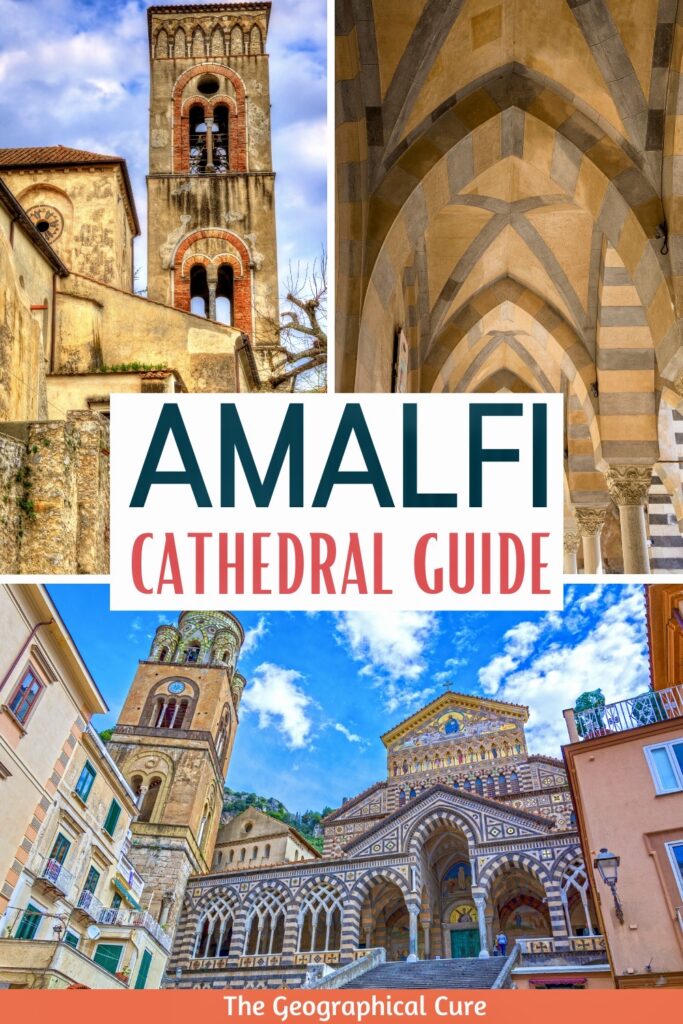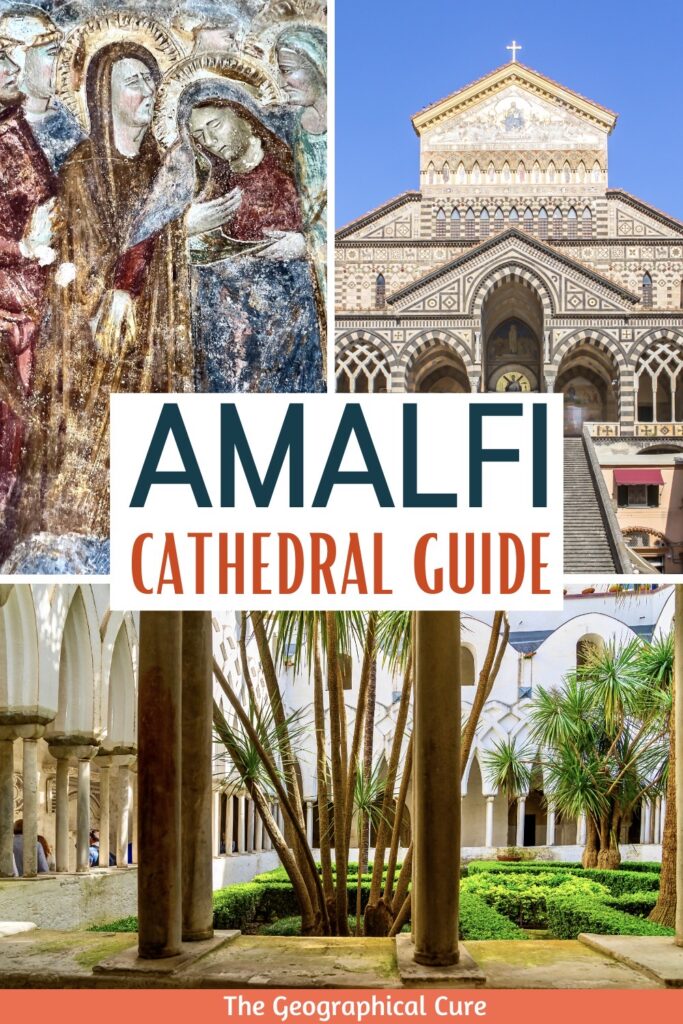Here’s my guide to visiting Amalfi Cathedral, also known as the Duomo di Sant’Andrea. It’s a magnificent church located in the heart of the coastal town of Amalfi Italy.
The cathedral is a true gem, both inside and out. It’s one of the premiere historic landmarks in southern Italy and part of the Amalfi Coast UNESCO designation.
First built in the 9th century, the cathedral’s architecture is a testament to the rich cultural history of the region. It’s a beautiful hybrid of Romanesque, Moorish, Gothic, and Baroque styles.
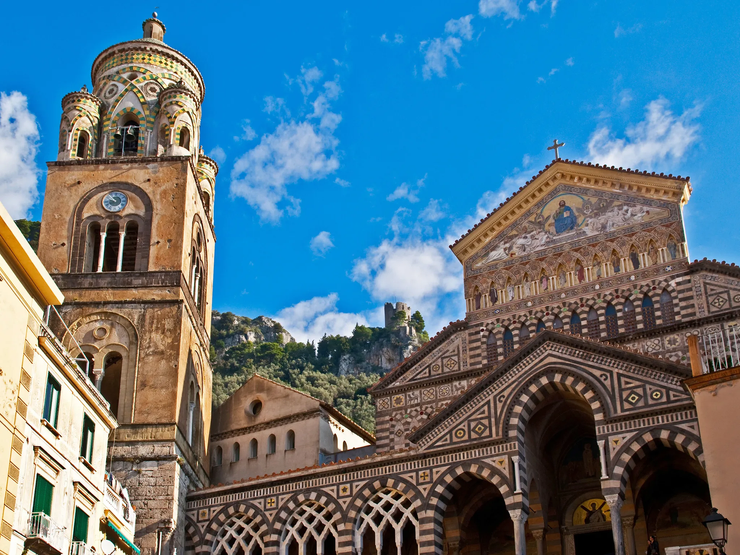
From the intricate facade to the beautiful mosaics and frescoes, every inch of Amalfi Cathedral is a masterpiece worth visiting.
History of Amalfi Cathedral
Amalfi Cathedral is dedicated to St. Andrew, the patron saint of Amalfi. He’s believed to have been one of the twelve apostles of Christ.
Although the cathedral dates back to the 9th century, like most edifices, it has undergone several renovations over the centuries. Today, the architecture reflects a mix of styles, including Romanesque, Gothic, Baroque, and Arab-Norman.
Originally, the cathedral was built to house the relics of St. Andrew, which were brought to Amalfi from Constantinople in the 4th century. The relics are said to have miraculous healing powers. For centuries, they have drawn pilgrims.
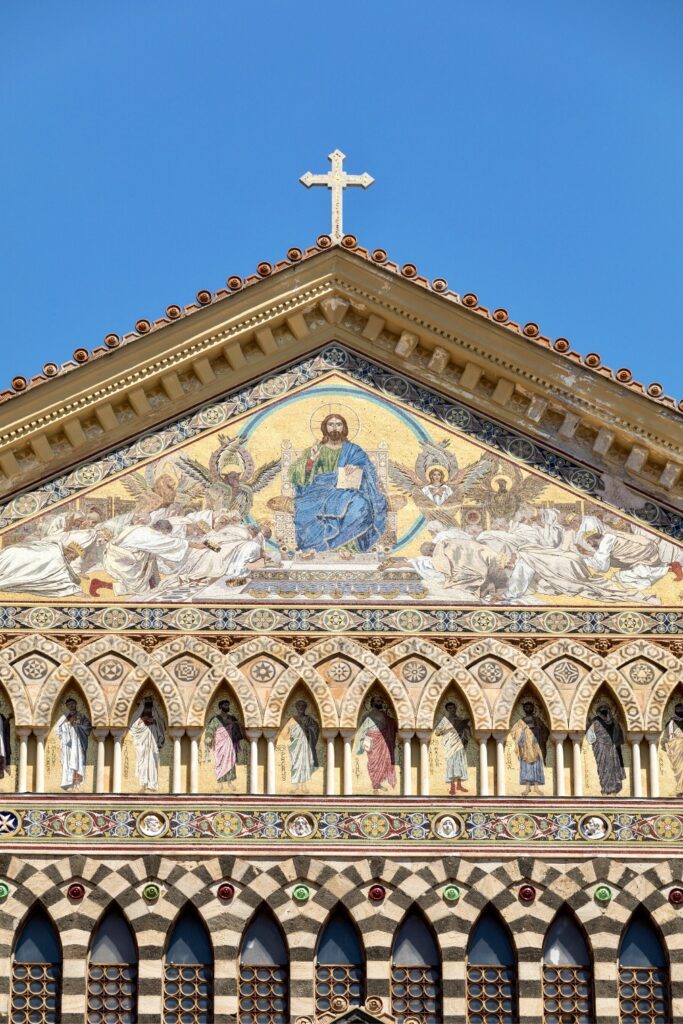
Construction of the cathedral began during the Byzantine era. In the 11th century, the cathedral was expanded to accommodate the growing number of pilgrims. New features such as the bell tower and cloister were added.
Unfortunately, much of the original structure was destroyed in an earthquake in 1343. Following the earthquake, the cathedral was rebuilt in the architectural style prevalent during the time, which was predominantly Gothic and Arab-Norman.
In 1861, part of the facade collapsed, damaging the atrium. The facade, with its intricate detailing and 62 step grand staircase, was entirely reconstructed in the 19th century.
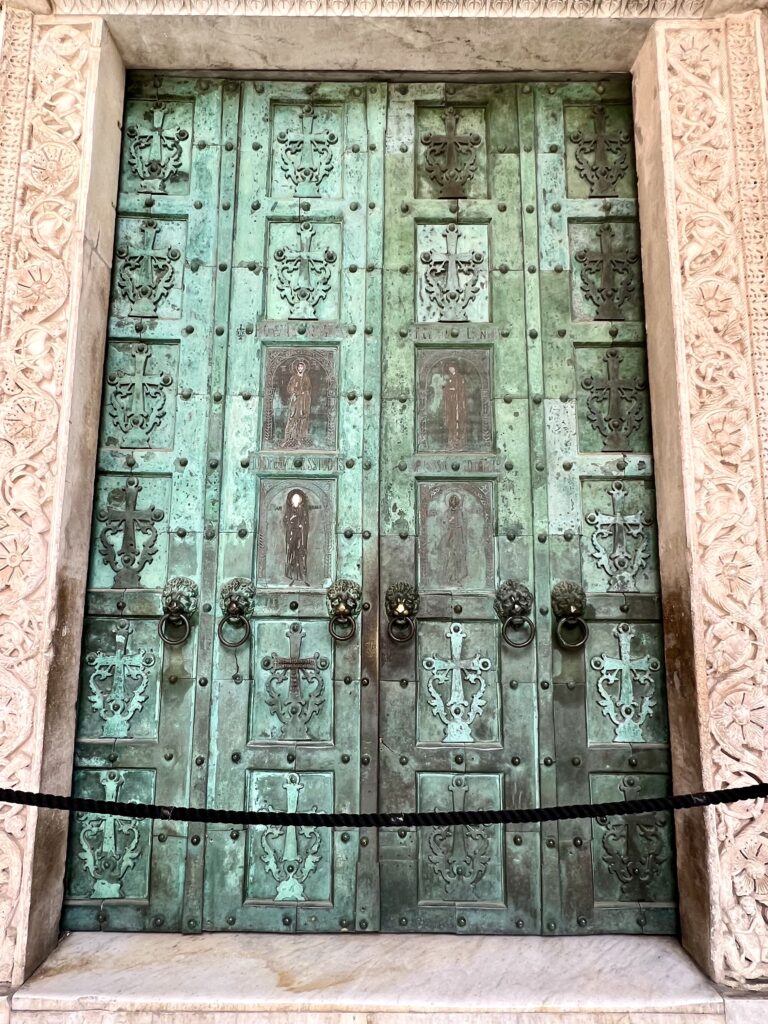
Guide To Amalfi Cathedral: What To See
Amalfi Cathedral is an impressive structure both inside and out, and there are many interesting features to explore. A visit to the cathedral can be divided into 5 parts:
- Cloister of Paradise
- Basilica of the Crucifix
- Diocesan Museum
- Crypt
- Cathedral
You enter through the Cloister of Paradise, on the left side facing the cathedral, to begin your visit. Here are 10 things to see in the cathedral.
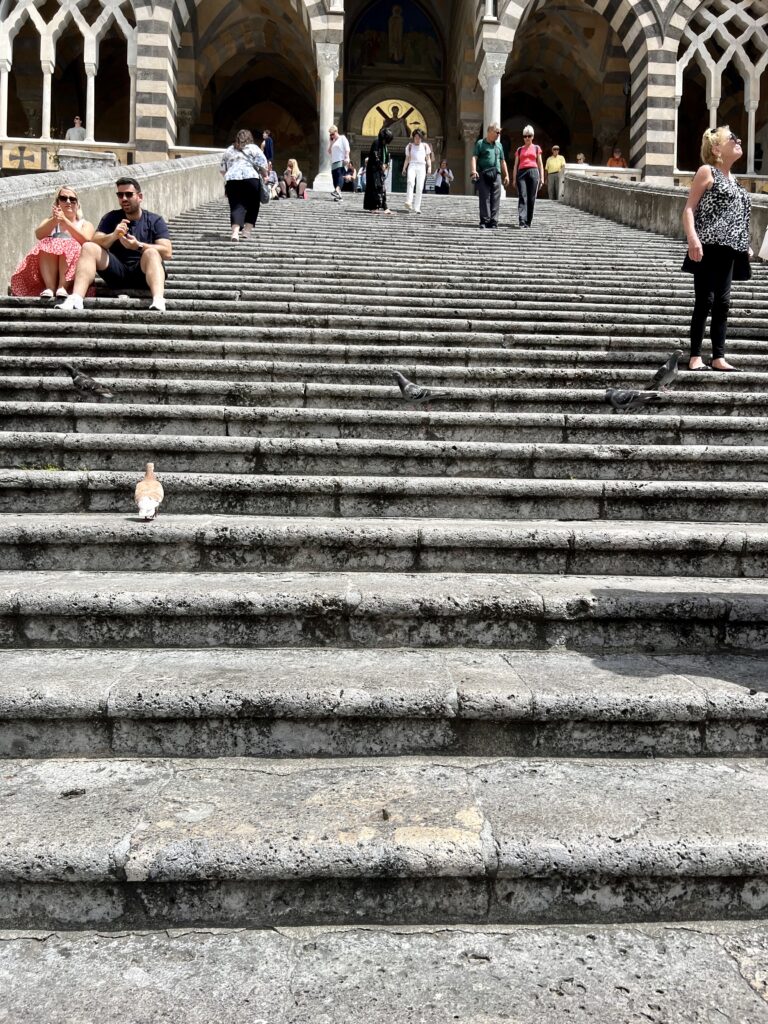
1. Grand Staircase
The grand staircase of Amalfi Cathedral is a remarkable architectural feature that leads up to the entrance of the cathedral. It creates a sense of grandeur and awe as you approach.
The staircase is composed of 62 steps that ascend in a sweeping and majestic fashion. It’s constructed with durable stone materials, showcasing the craftsmanship and sturdiness typical of medieval and Renaissance architecture.
The staircase is a great place to plop down and have a gelato, and you’ll see many tourists and locals doing just that.
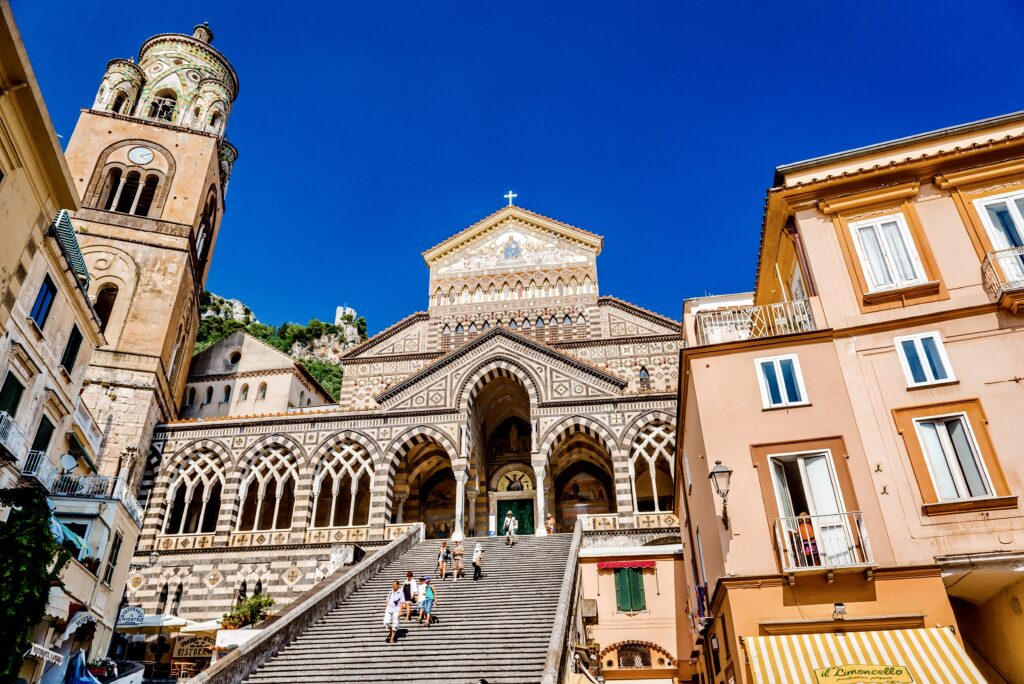
2. Exterior Facade
As I mentioned, the cathedral’s exterior facade is a blend of architectural styles. Although it’s only from the 19th century, it’s nonetheless strikingly beautiful.
The main facade is composed of three arched portals, with lacy detailing. The arches help to create a sense of height and grandeur. Their horseshoe shape and geometric patterns reflect a Moorish influence.
Above the triangular pediment is a frieze with mosaics of the 12 apostles. At the very top, in the tympanum, mosaics portray The Triumph of Christ. It’s a work created by Domenico Morelli.
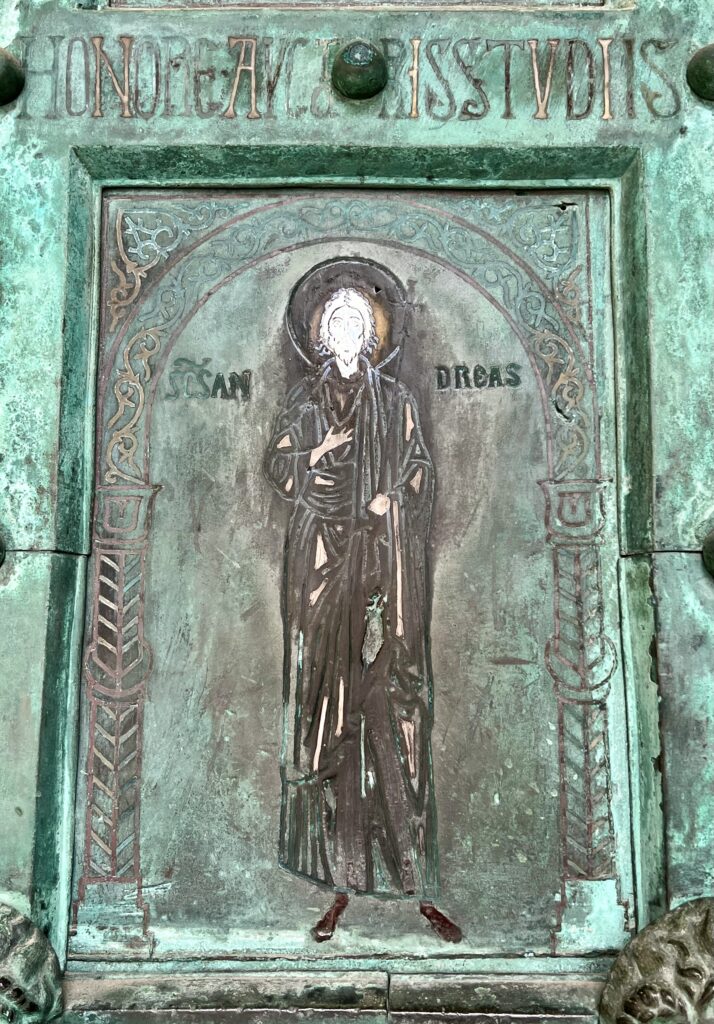
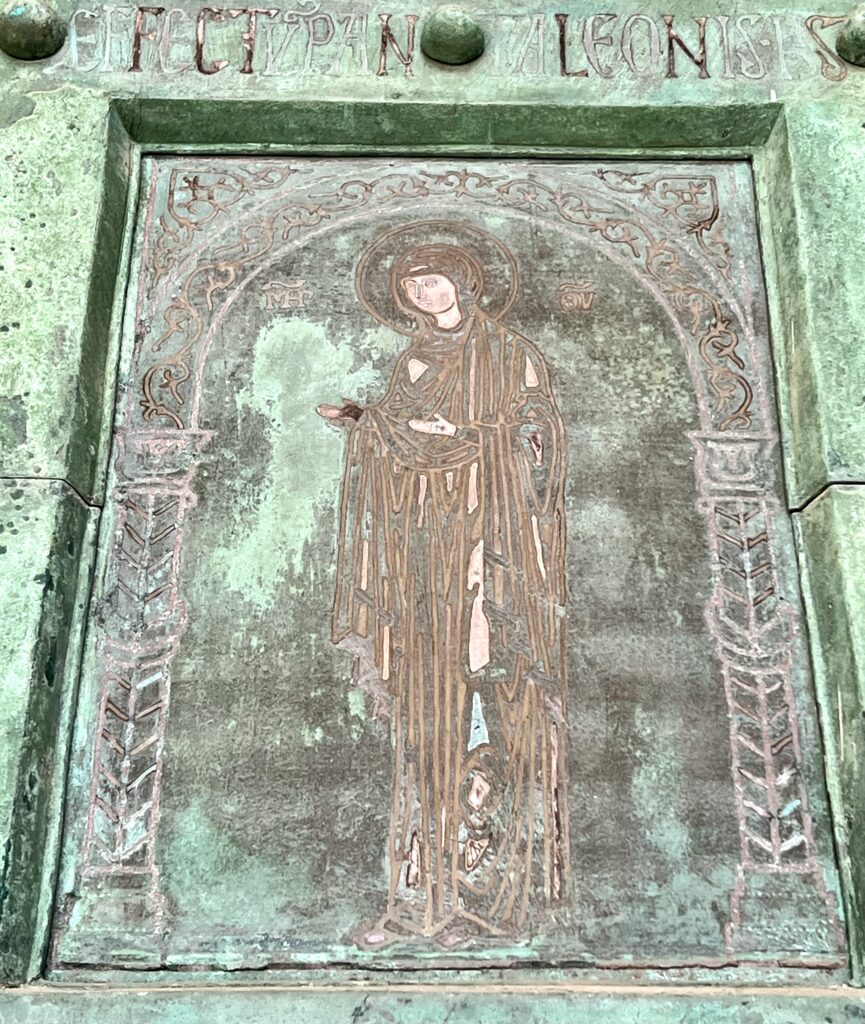
3. Bronze Doors
One of the most notable features of the cathedral is its magnificent Bronze Doors. They are original and date from 1066. They were created by a group of Lombardian and Byzantine artists.
The door is made up of 28 panels, arranged in three horizontal rows. Each depict scenes from the life of Christ or St. Andrew. Four silver figures represent Christ, Saint Peter, and Saint Andrew.
The door itself is made of bronze, which was a popular material for doors during the medieval period because of its durability and resistance to corrosion.
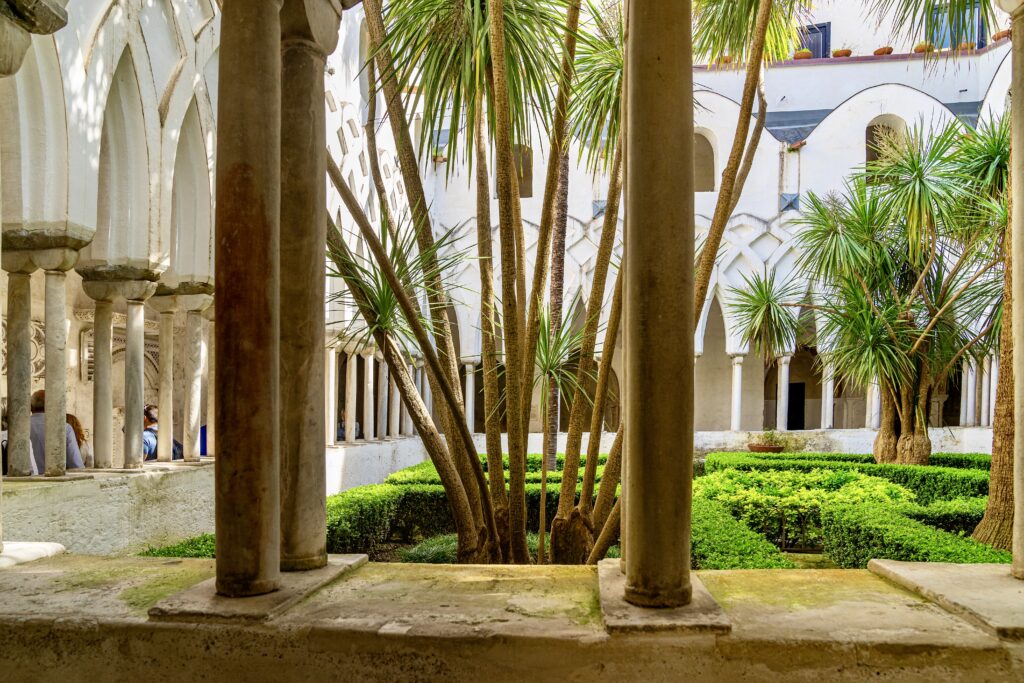
4. Cloister of Paradise
The cathedral’s Cloister of Paradise is, I think, the most beautiful part of the church. It’s a is an enclosed courtyard adjacent to the cathedral.
The cloister is a serene space. It’s home to a beautiful garden, ancient Roman statuary and sarcophagi, Moorish arches, and palm trees. Two of the sarcophagi came from the ruins of Paestum further south.
The cloister was originally built as a tomb for the Amalfi aristocracy between 1266-68. Along the perimeter are several chapels they commissioned.
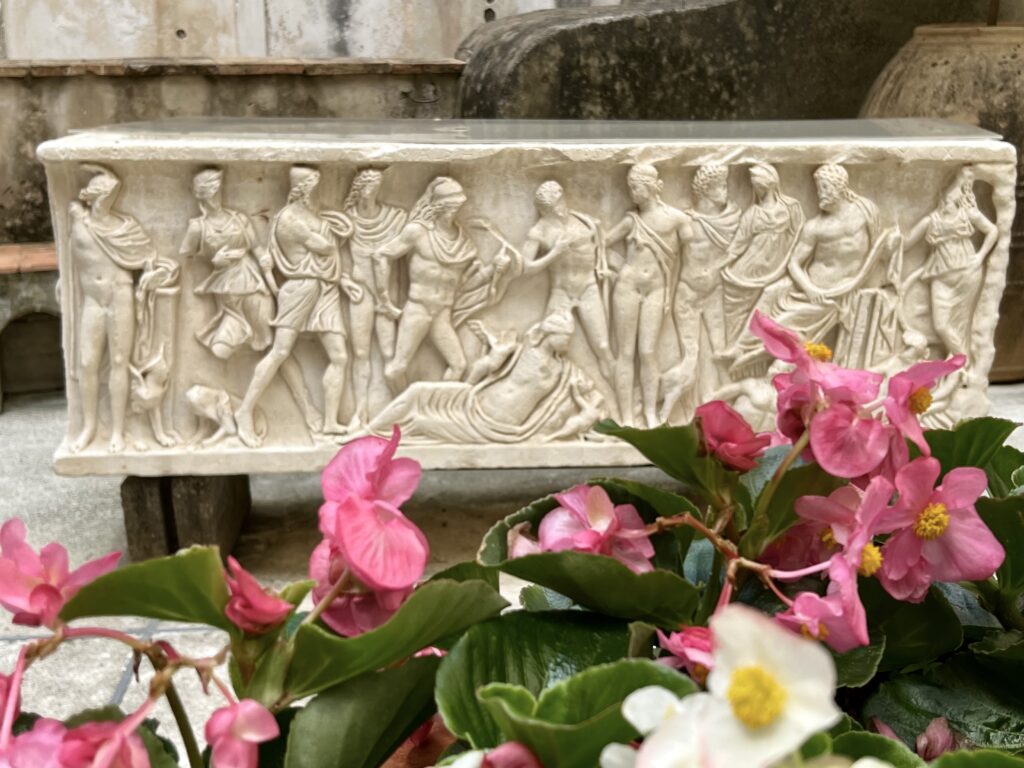
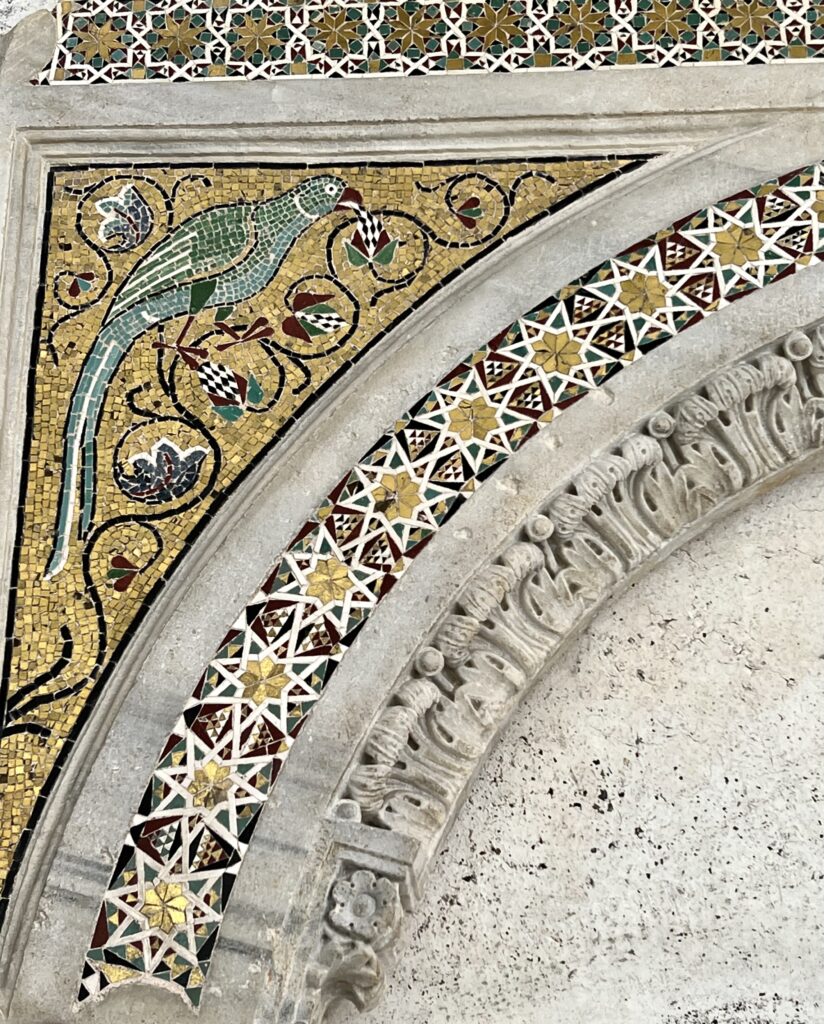
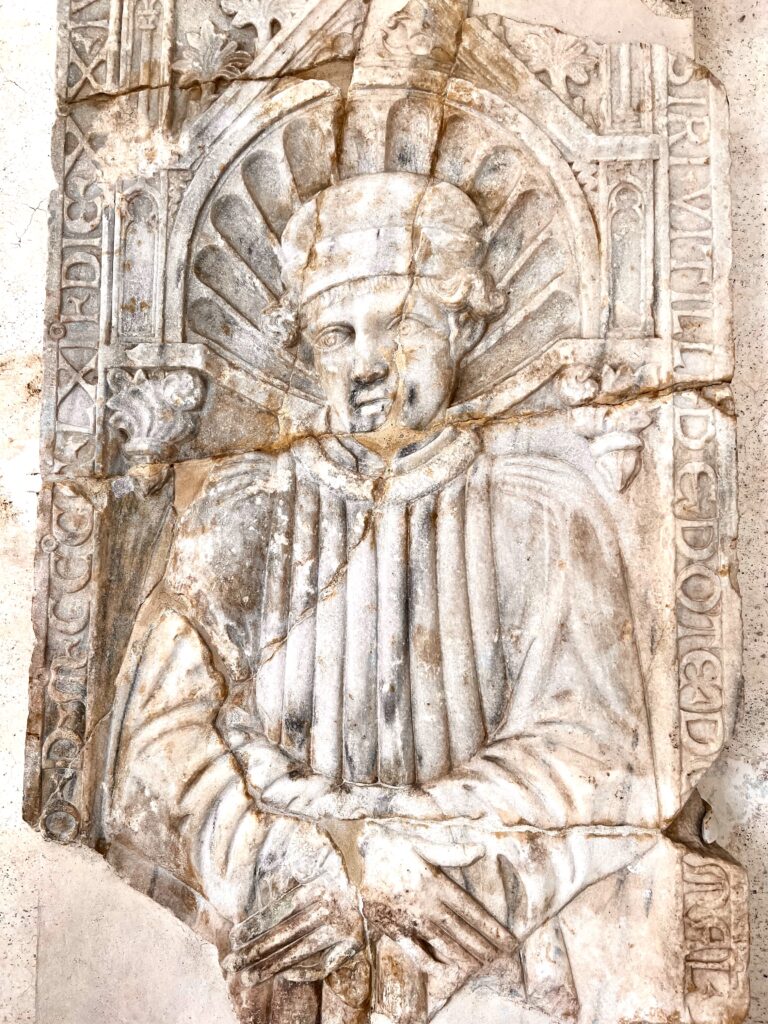
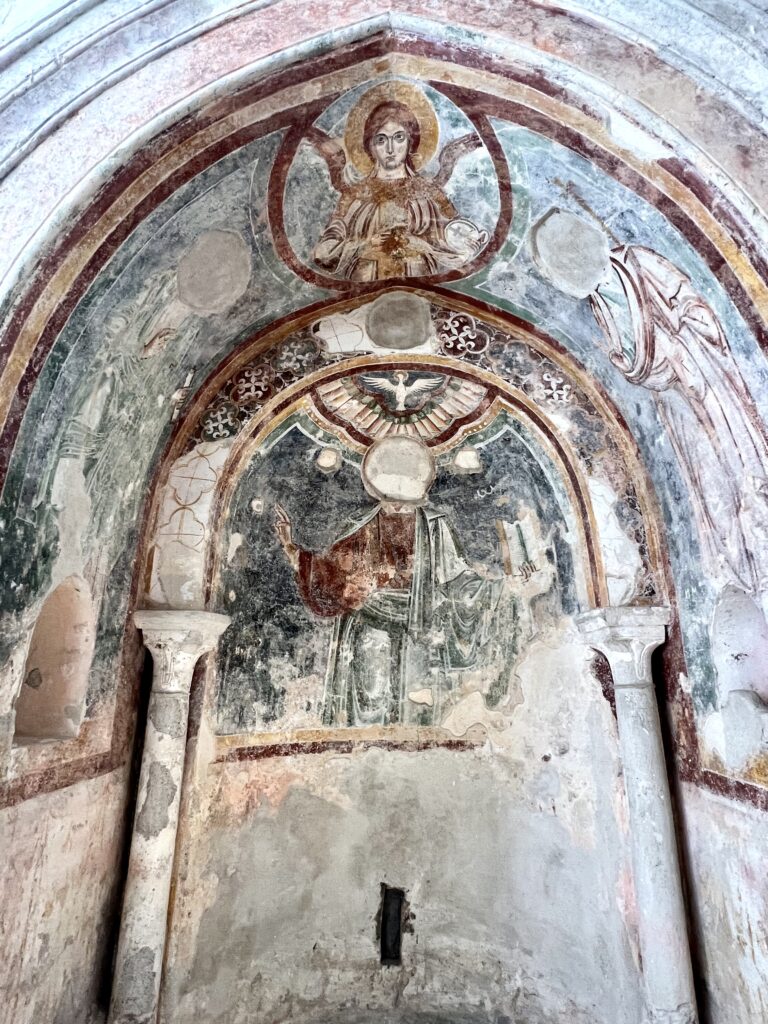
The cloister has a beautiful collection of medieval frescoes that were once part of the cathedral’s interior decoration. These frescoes depict various religious scenes, including the lives of saints, biblical stories, and symbolic imagery.
READ: 20+ famous Medieval Paintings In Italy
The frescoes were transferred to the cloister for preservation and to protect them from weathering and deterioration.
You can also see some marble fragments with mosaic decorations.
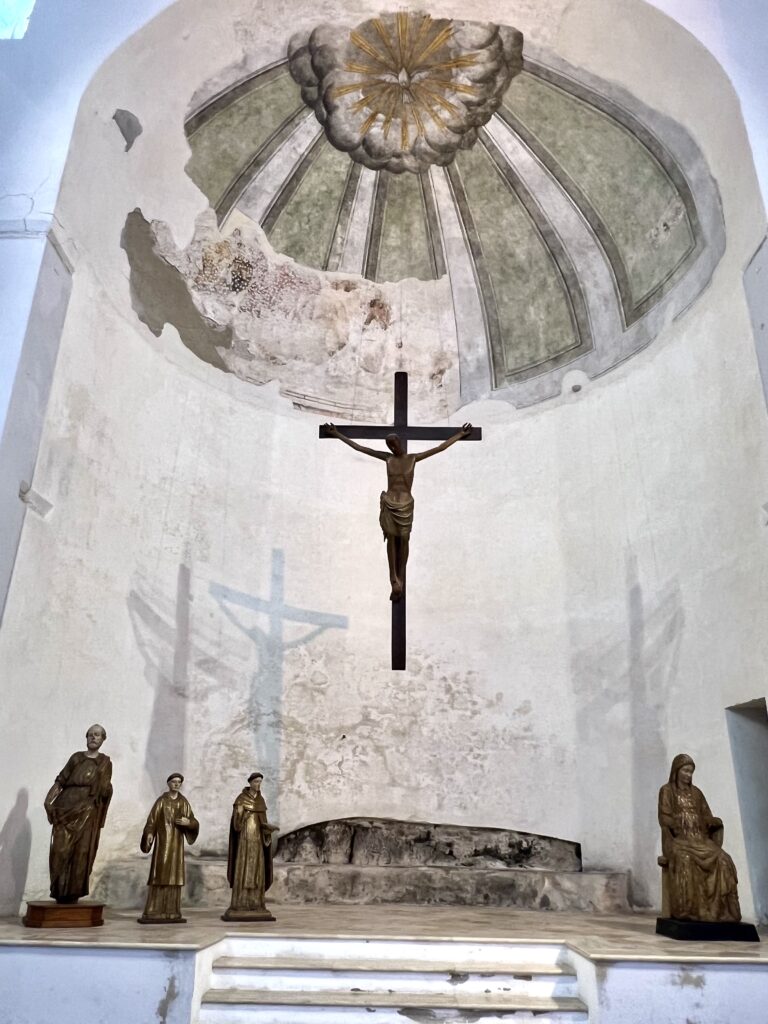
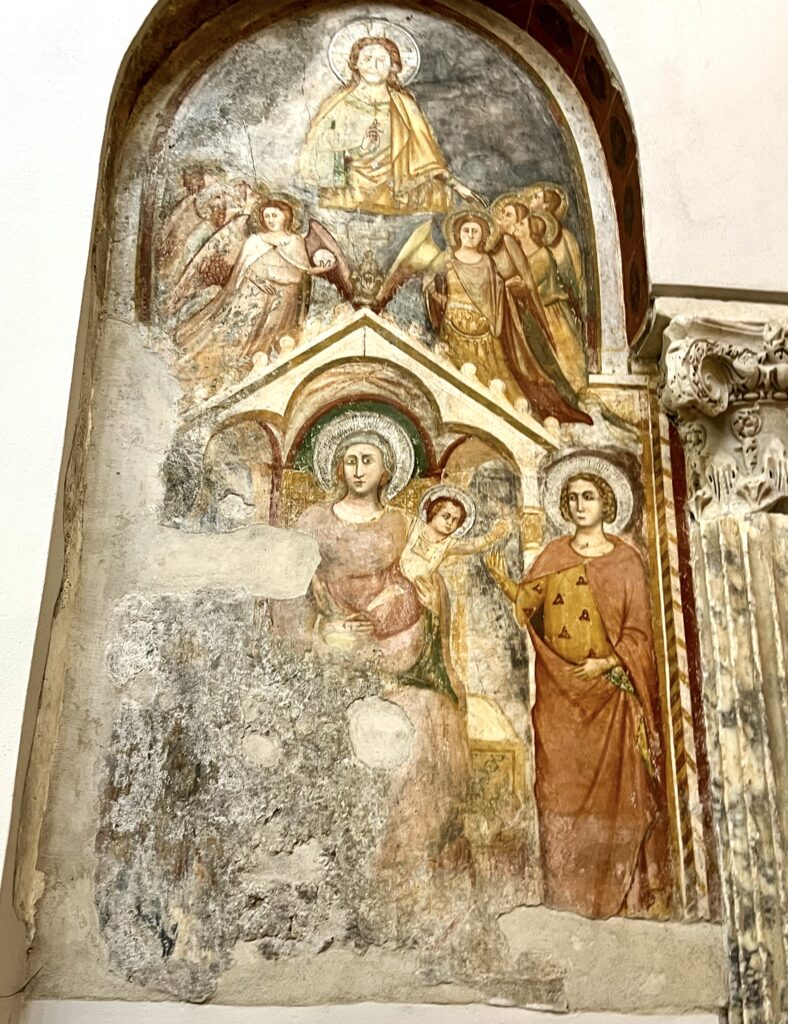
5. Capella del Crocifissio
Off the cloister is the Chapel of the Crucifix. It’s the oldest part of the church.
You’ll find traces of 14th century frescos, a significant crucifix, and other religious artifacts. The main focal point of the chapel is the crucifix, which is believed to date back to the 13th century.
It’s a wooden sculpture depicting the crucified Christ. The crucifix is venerated by the faithful and holds religious significance within the local community.
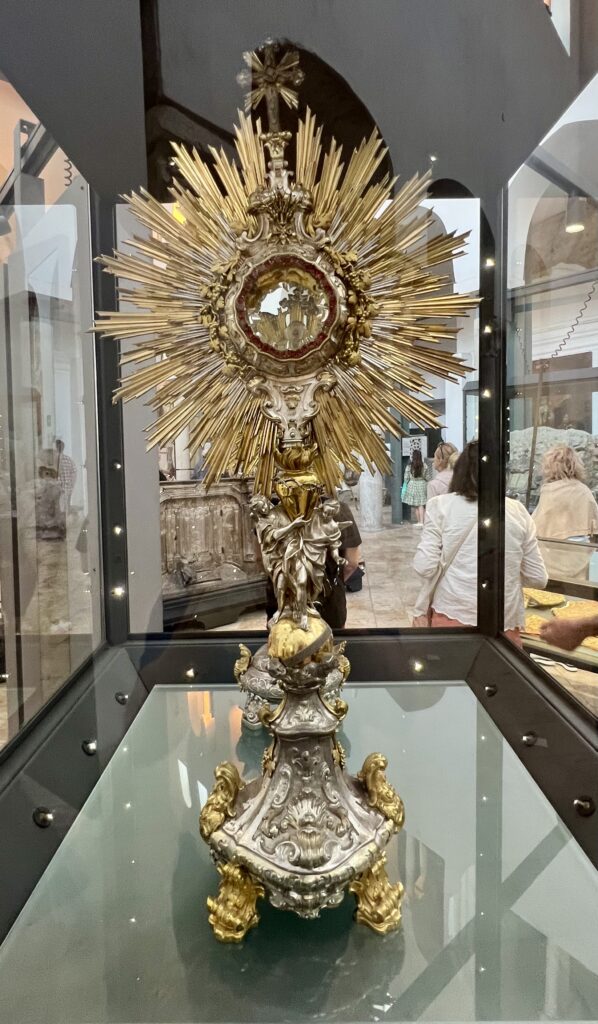
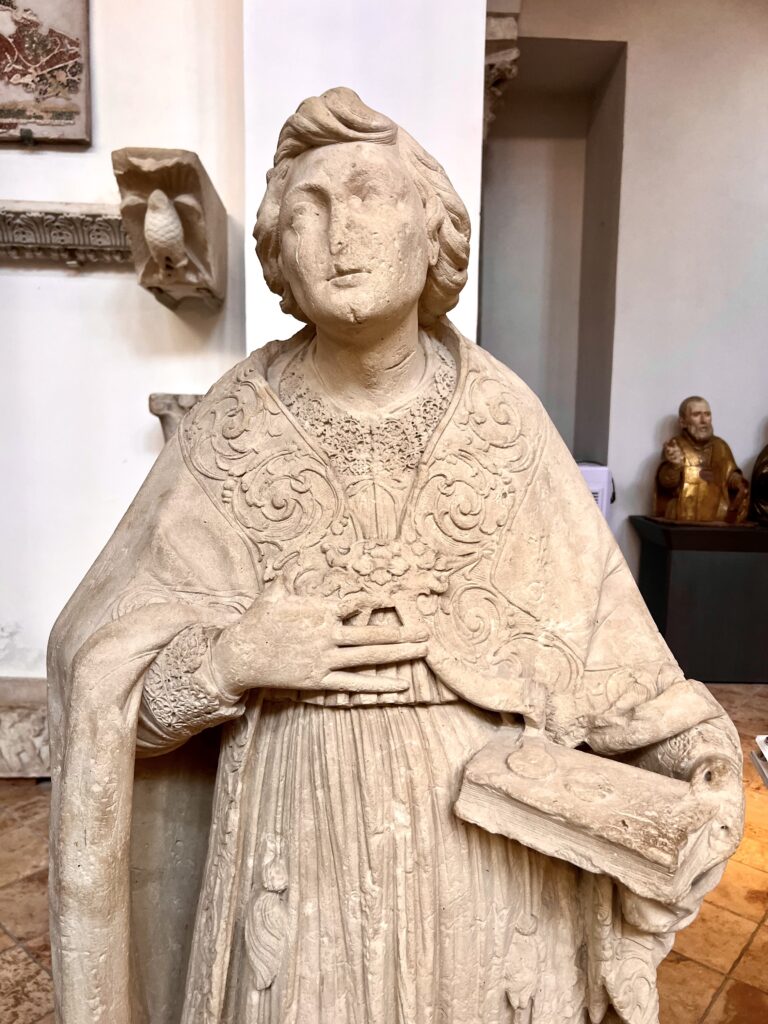
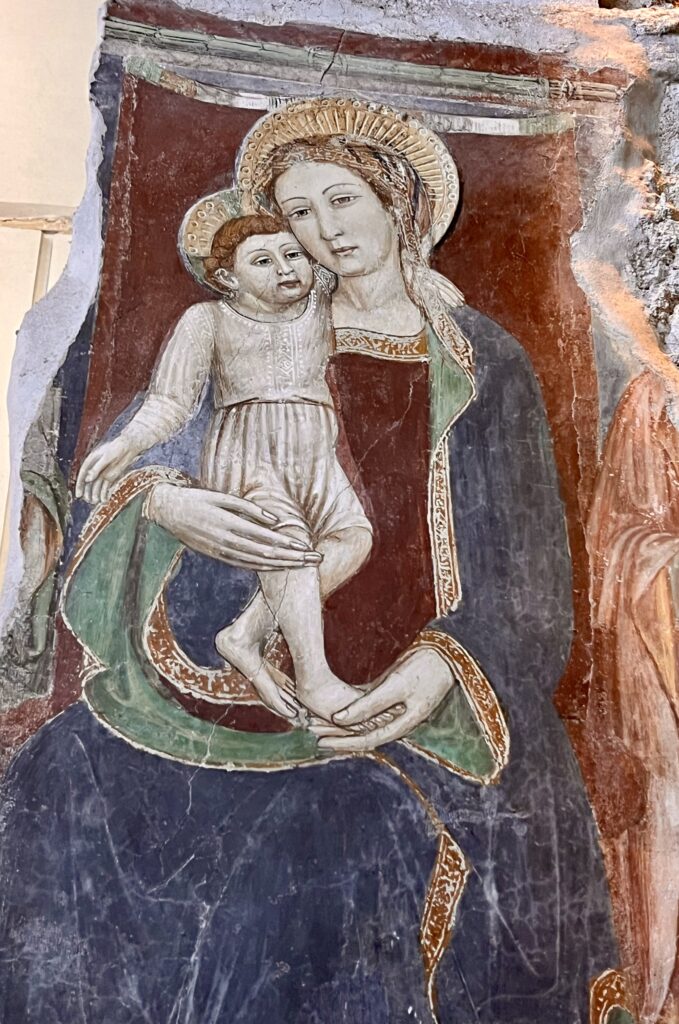
6. Diocesan Museum
From the cloister, you head inside the Diocesan Museum. The museum houses a range of items, including liturgical objects, sacred vestments, paintings, sculptures, and historical documents.
These sculptures were likely salvaged from nearby ruins and brought to the cathedral for preservation. The collection includes several busts and statues, including a statue of the Roman goddess Fortuna and a bust of the Roman emperor Tiberius.
Visitors to the museum can admire intricately crafted silver and gold reliquaries, ornate chalices, ancient manuscripts, and beautifully painted panels. I was particularly taken with the ancient frescos and an elaborate bishop’s hat with inlaid pearls and gems.
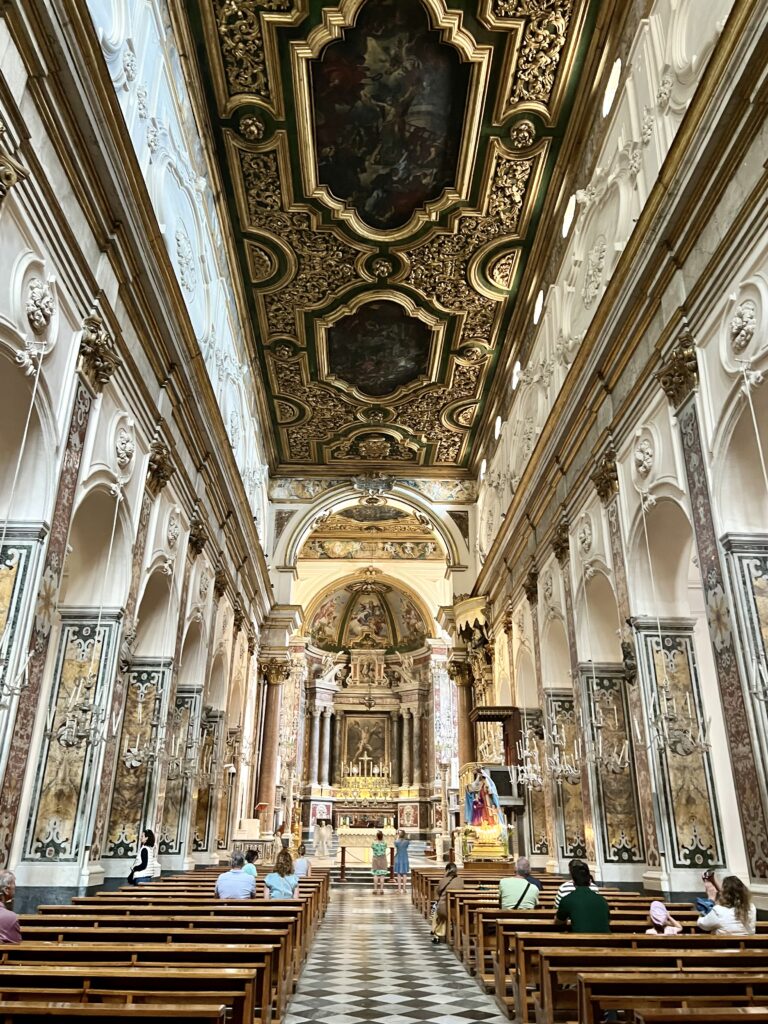
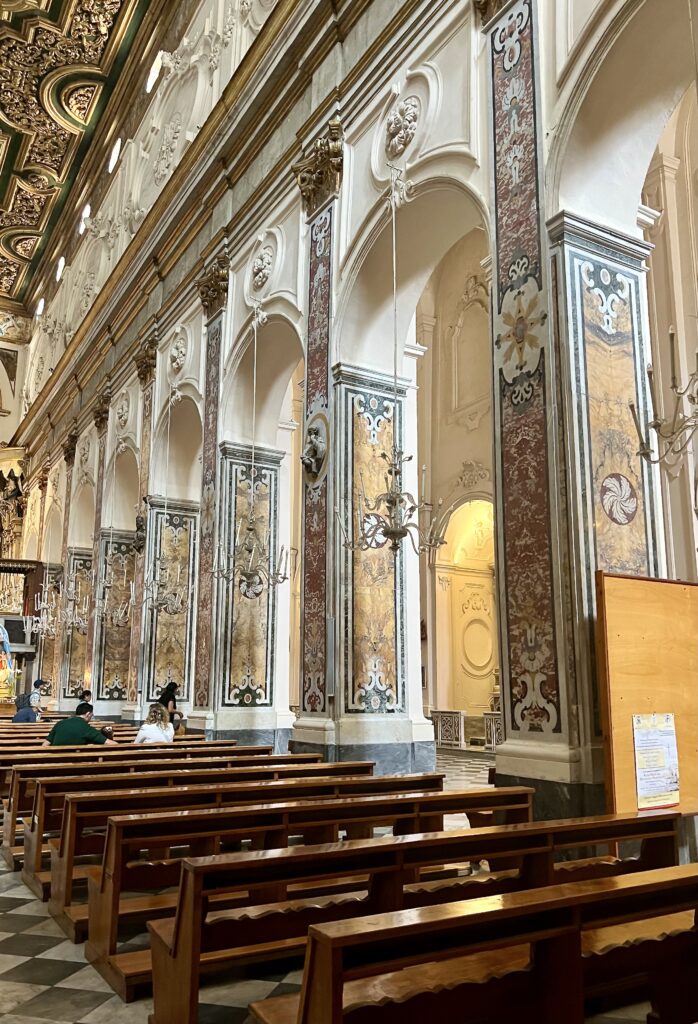
7. Nave
The cathedral’s nave is the main central area of the church and is lined with columns and arches. It’s been Baroque-ified, hence it’s decoration is a bit over-the-top. The columns are decorated with brightly colored inlaid marble.
The ornate main altar is a focal point of reverence and devotion within the nave. It is adorned with ornate decorations, including gold leaf, marble, intricate carvings, and precious materials.
The ceiling is decorated with frescos, framed by gliding. They depict the life and martyrdom of Saint Andrew and were painted by Andrea dell’Asta, an Italian painter of the 17th century.
There’s a colorful statue of the Virgin Mary near the altar. And a mother of pearl crucifix near the front door.
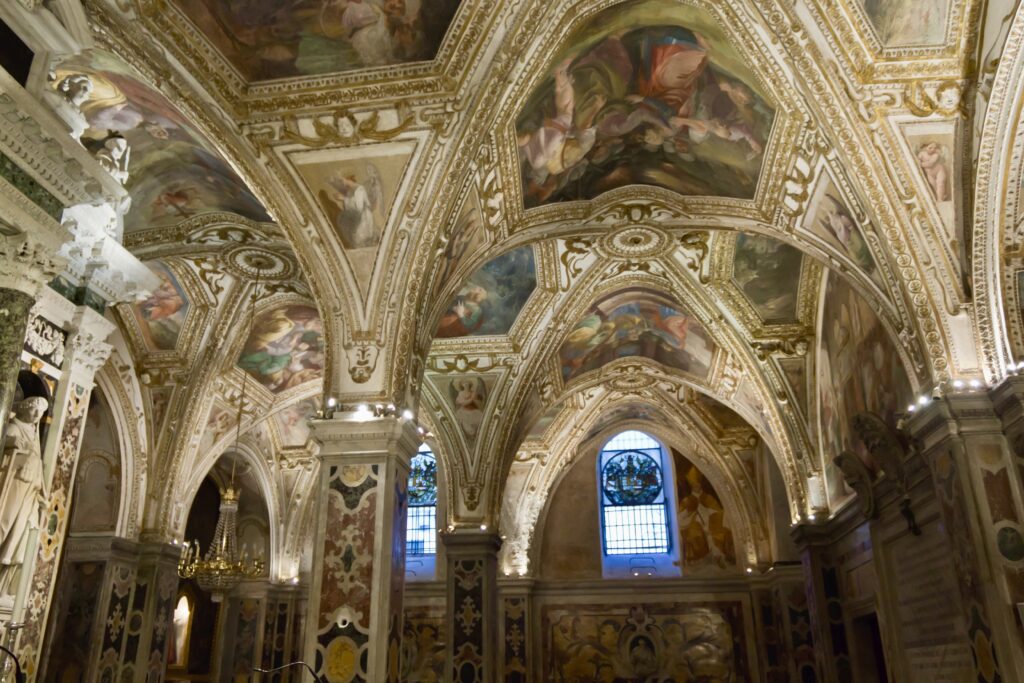
8. Crypt of St. Andrew
The crypt is located beneath the cathedral’s main altar. It’s where the relics of St. Andrew are kept. The crypt boasts a number of beautiful frescoes and mosaics dating back to the 12th century.
More importantly, it’s also home to the remains of St. Andrew, which are kept in the crypt beneath the main altar. The relics have been a significant draw for pilgrims for centuries.
They’re said to have miraculous healing powers. On top of that, legend holds that, when the relics are brought out for veneration on the saint’s feast day, the dried blood in the vial miraculously turns into liquid form. This event is known as the “Miracle of the Liquefaction.”
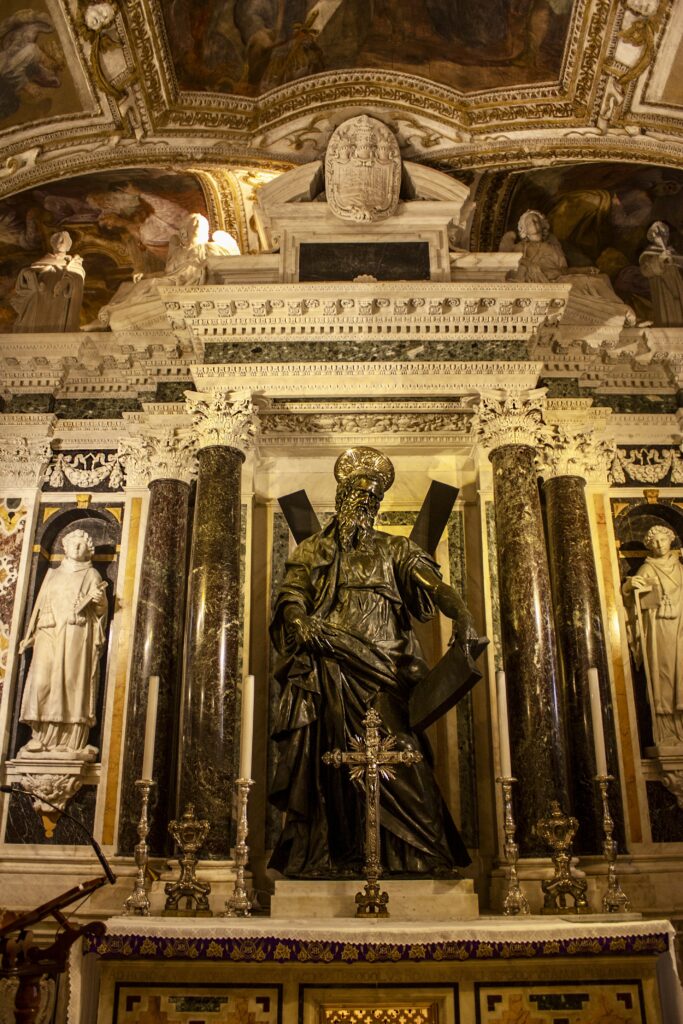
The faithful believe that it signifies the saint’s presence and intercession. The ceremony of the liquefaction takes place in the presence of clergy and devotees, who witness the transformation of the blood.
The phenomenon of blood liquefaction seems to be common in southern Italy. I was also told about this legend (with different saints) in both Naples and Ravello.
Aside from the relics, visitors can also marvel at the beauty of the artwork in the crypt. It’s decorated with Baroque murals from the 1660s.
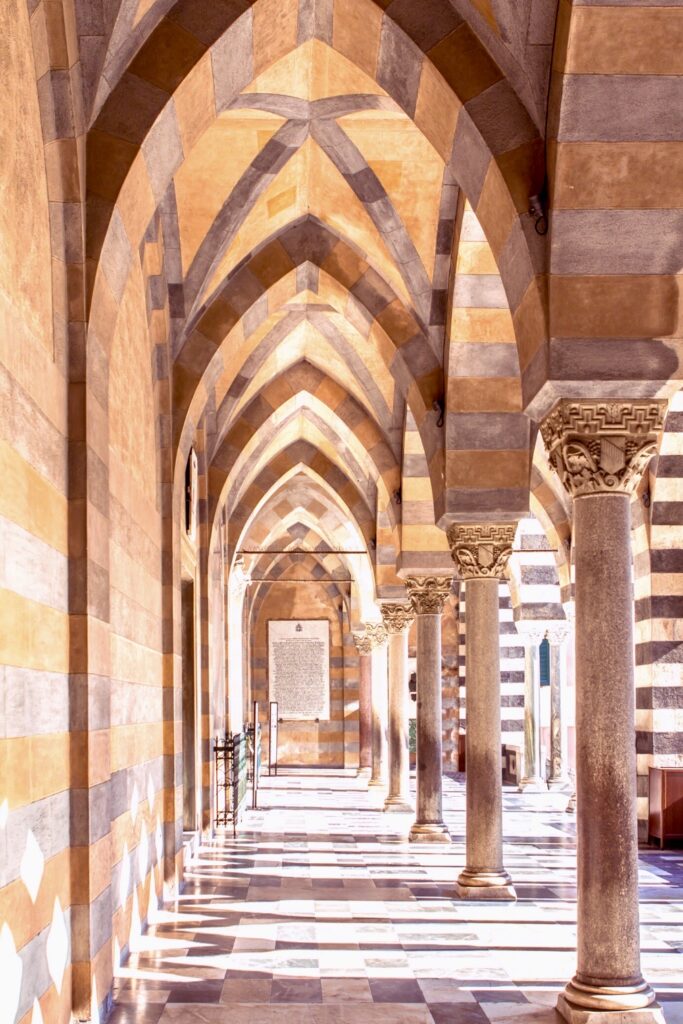
9. Loggia
When you exit the cathedral, you’ll be in the loggia.
A loggia is a covered gallery or open arcade that is often located at the front or main entrance of the cathedral. The Amalfi loggia has alternating stripes of dark and light colored marble, with arches held up by granite Corinthian columns.
From the loggia’s vantage point, you can enjoy panoramic views of Amalfi, including its streets, buildings, and the stunning coastline.
This is a good place to snap a photo of the buzzy main square.
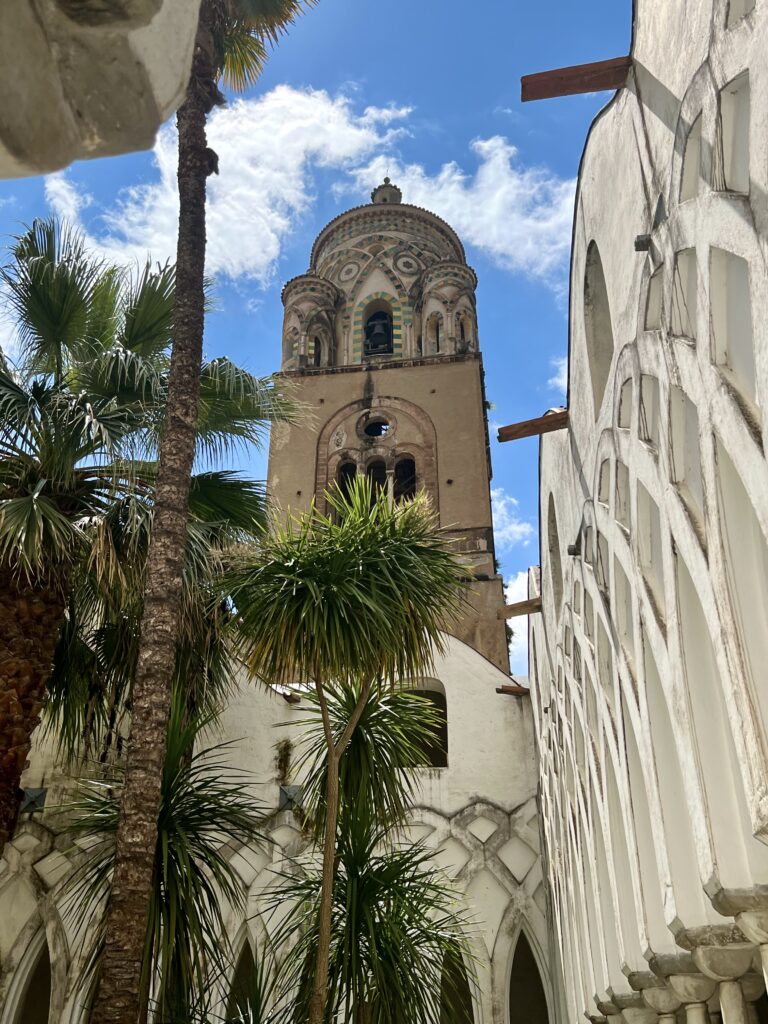
10. Bell Tower
The cathedral bell tower dates from 1276 and rises majestically alongside the cathedral. It has a Romanesque architectural style, with Moorish flourishes at the top.
You can see ogival arches, four rounded crenellated mini-towers, and geometric medallions made with black lava and limestone. The central tower is covered with majolica tiles.
The bell tower has arched openings or windows at different levels, allowing the sound of the bells to resonate throughout the town. At the top, is a bell chamber where the bells are housed. They are traditionally rung on special occasions or religious ceremonies.
You can climb to the top of the bell tower for panoramic views of the town, the coastline, and the surrounding landscape.
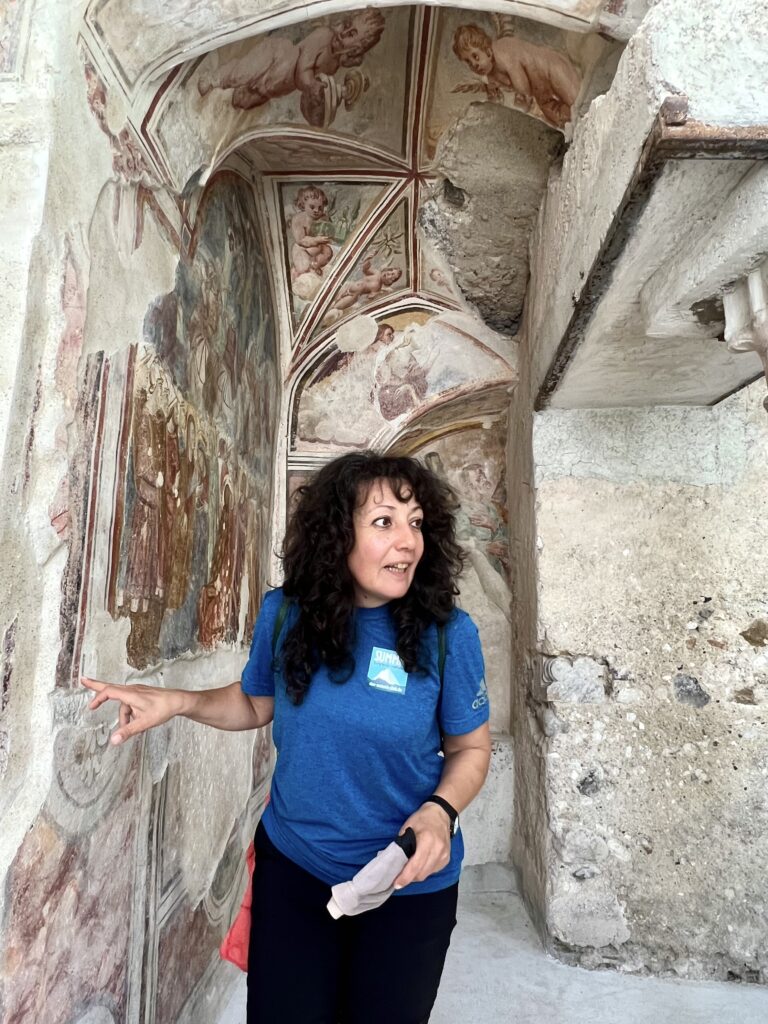
Practical Guide & Tips For Amalfi Cathedral
Here are some must know tips for visiting Amalfi Cathedral.
Address:
Piazza Duomo, 84011 Amalfi SA, Italy
Opening Hours:
The cathedral is open 10:00 am to 5:00 pm daily.
Tickets & Tours:
The admission price is 3 euros. I recommend booking a guided tour to get the complete historical backdrop. I had an outstanding local guide, Paola from MakeMeYourGuide.
Is Amalfi Cathedral Worth Visiting?
I think it’s 100% worth visiting. Don’t let the steep staircase dissuade you!
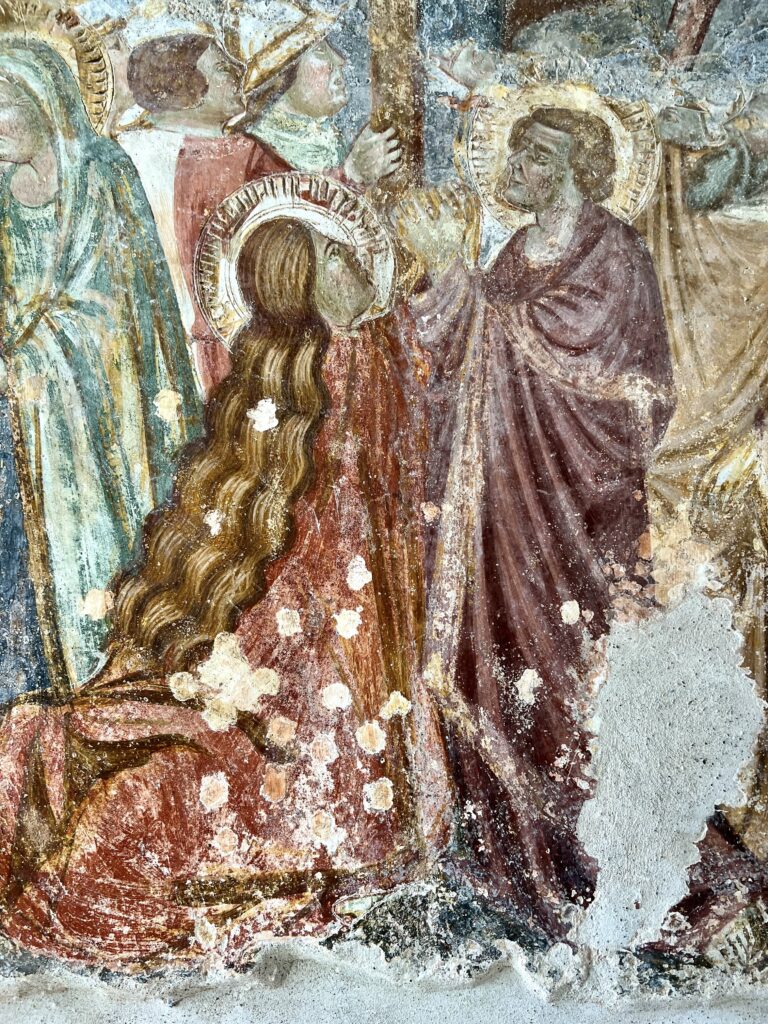
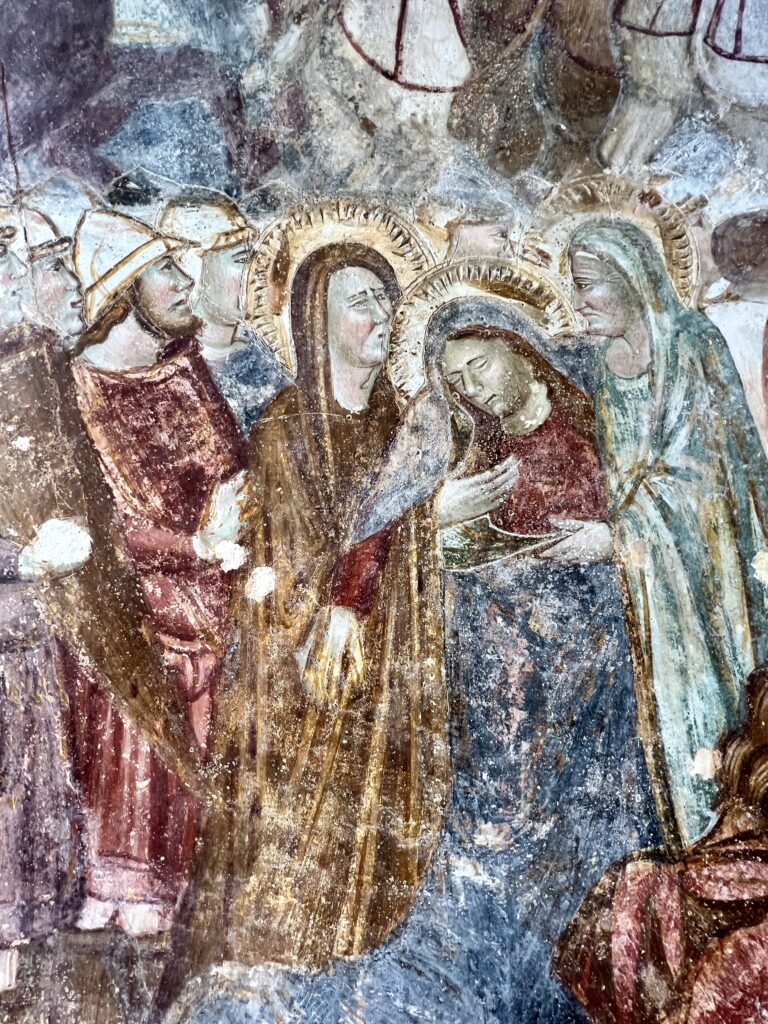
Festival of St. Andrew
If you are interested in the cathedral’s titular saint, the Festival of St. Andrew takes place annually on November 30. This date marks the feast day of Saint Andrew.
During the festival, the relics of the saint are displayed for veneration and you can observe the Miracle of the Liquefaction. The festival is marked with religious ceremonies, processions, and other celebrations.
I hope you’ve enjoyed my guide to Amalfi Cathedral. You may enjoy these other Italy travel guides and resources:
- 3 day itinerary for Rome
- 5 day itinerary for Rome
- 1 day itinerary for Vatican City
- 3 day itinerary for Florence
- 2 day itinerary for Venice
- 1 day itinerary for Milan
- 1 day itinerary for Siena
- One week in Umbria
- 10 days in Italy itinerary
- 10 day itinerary for Tuscany
- 12 ways to spend 1 week in Italy
- 2 weeks in Sicily itinerary
If you need a guide to Amalfi Cathedral, pin it for later.

